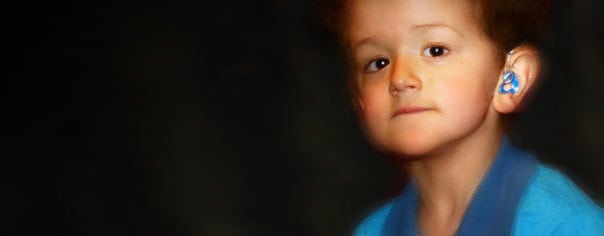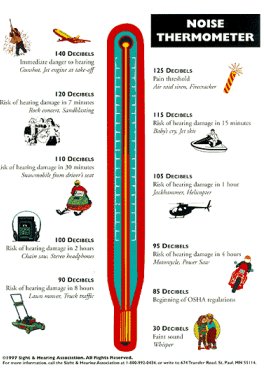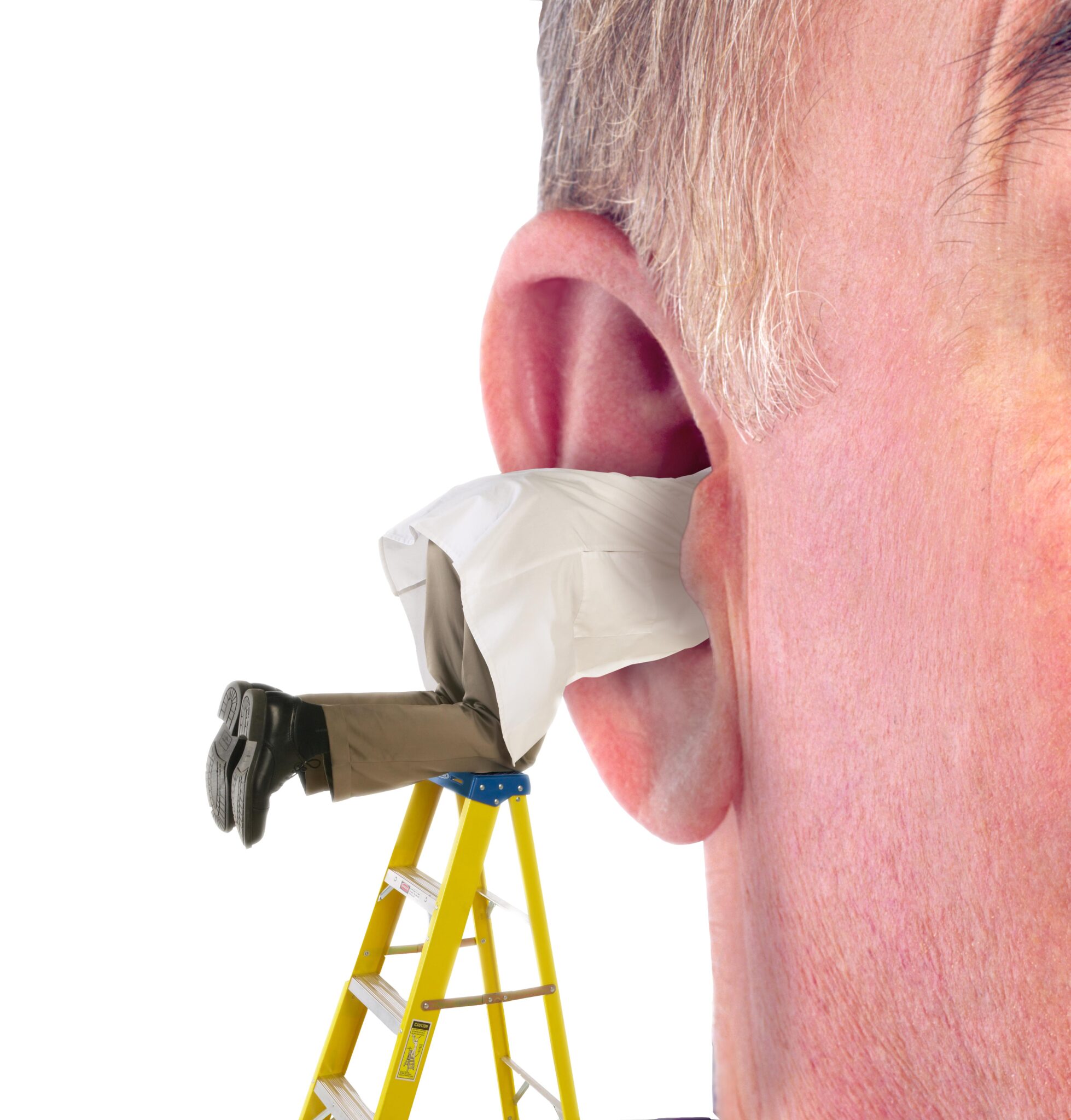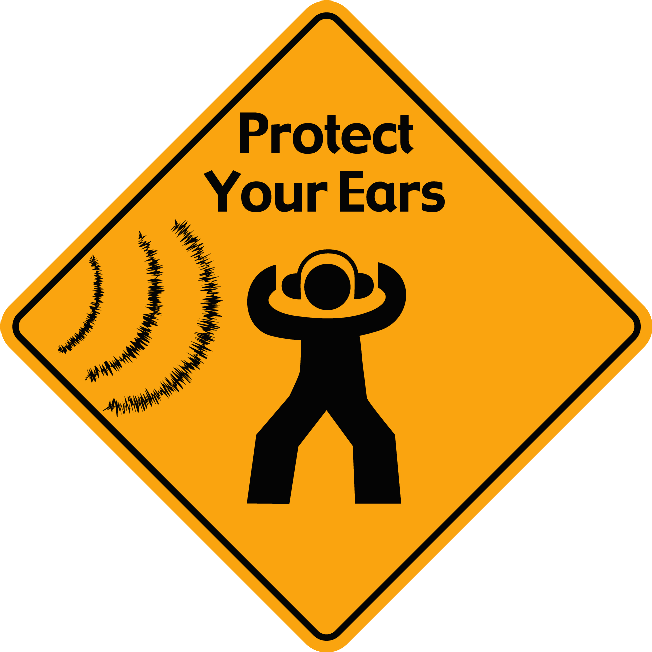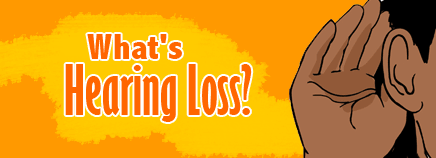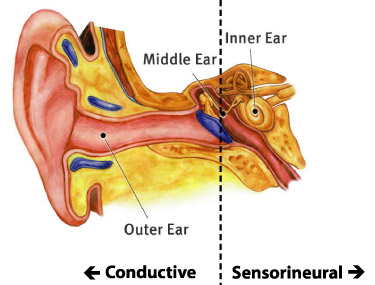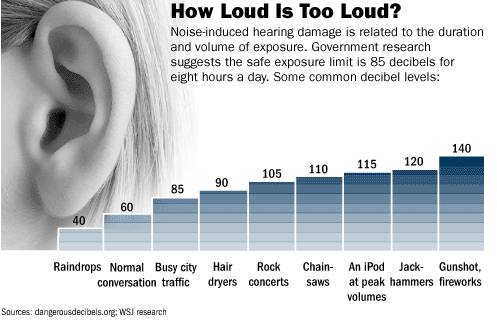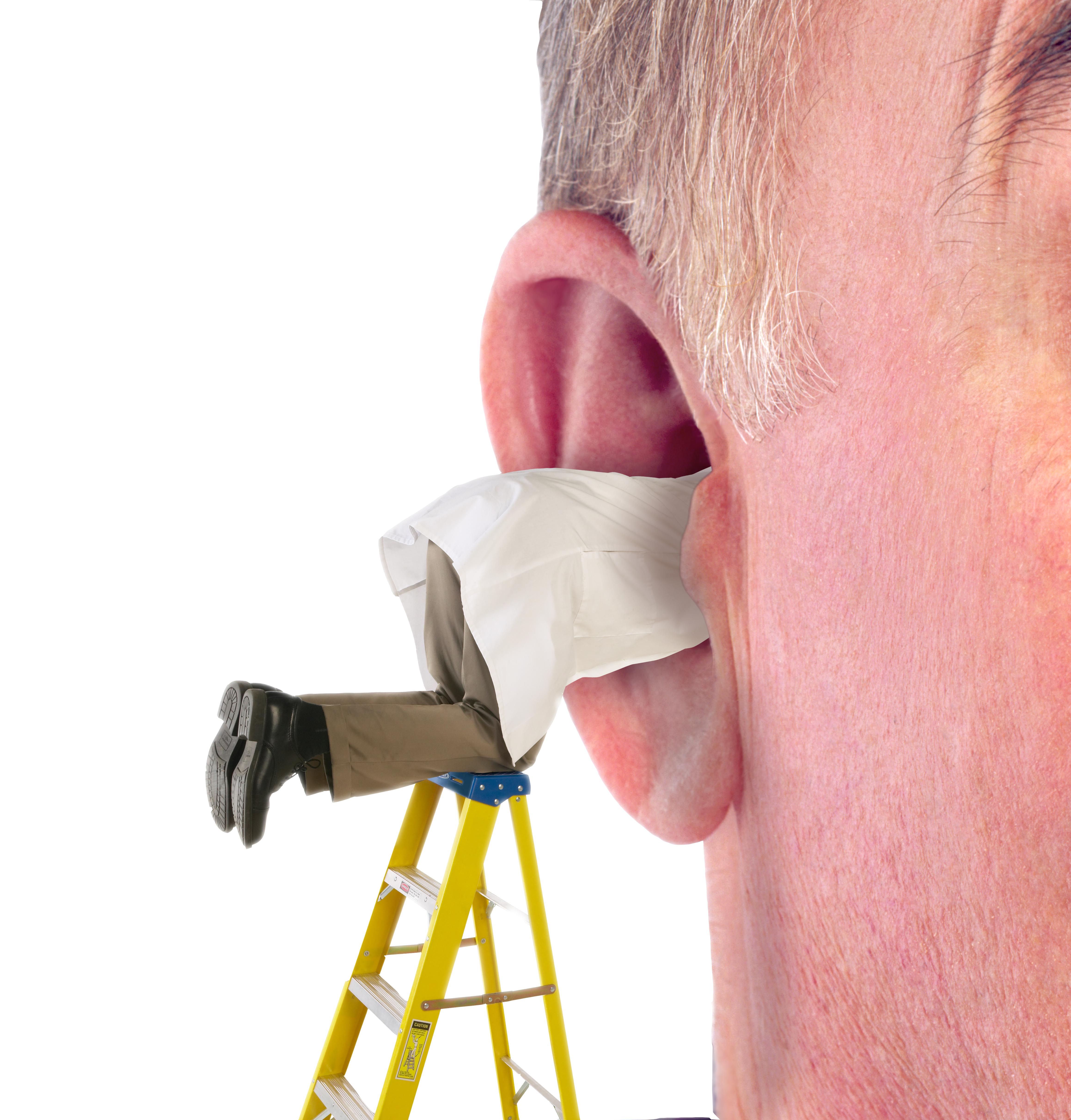Again joining the conversation is my friend and colleague Greg Keeney, audiologist and owner of Affordable Hearing Aids in Texas.
Addressing hearing loss is a humbling experience in that it forces you to face your mortality. The irony is that your feeling immortal is what leads to hearing loss in many instances (e.g., gunshots, explosions, scuba diving, noise exposures at concerts and sporting events, etc.).
Prevention and protecting your hearing is easy; the decision to do so seems not to be so easy. Remembering this hearing thermometer is a good way to know what activities hurt your hearing.
When it gets to the point that you’re having acute difficulty hearing, assuming you’re a victim of trauma, you may be inclined to flush wax out of your ear or use wax softeners. If you go this route, be careful. Remember that old Q-Tip commercial with the tag line, “You should never place anything in your ear smaller than your elbow.” Unless it’s ridiculous easy, you should have a health provider remove anything from your ear. Importantly, you should never place anything sharp in your ear (e.g., bobby pins, tweezers, etc.).
There are many procedures and surgeries that can help with hearing loss, including the following:
- Placing tubes in the eardrum (aka T-tubes, tympanostomy tubes) to remove fluid
- Repairing the eardrum or the bones in the middle ear that assist in sound transmission
- Wearing heading aids, though only one of five individuals who could benefit from a hearing aid uses one
- Using cochlear implants, a final option for those whose hearing impairment is so severe that various types of hearing aids aren’t effective or a viable option (Learn about cochlear implants at www.sterlingmedicaladvice.com.)
Sign language can complement these other methods or aural based communication when other methods don’t work.
Let’s focus on some frequently asked questions about hearing aids.
How do hearing aids work?
Hearing aids consist of a microphone, an amplifier and a speaker. These components convert sound waves to signals you can hear through the speaker. It’s really that simple.
How do experts determine that I need a hearing aid?
When the time comes, a physician who specializes in ear, nose and throat disorders (otolaryngologist) will evaluate possible causes of hearing impairment. An audiologist, a hearing health professional, may also identify and quantify the degree of loss. The results of these evaluations will determine your needs.
What are the different types of hearing aids?
Hearing aids differ in style, placement and means of amplifying sound. You can place them behind the ear, in the ear canal or within the middle ear for this effect. Analog hearing aids convert sound waves into electrical signals, which are amplified. Digital hearing aids convert sound waves into numerical codes, similar to the binary code of a computer, before amplifying them. The digital method allows more customization of various frequencies. These simple but important distinctions comprise how hearing aids are individualized.
What questions should I ask when getting a hearing aid?
The most important consideration is your mastery of the device you’ll be taking home with you. You shouldn’t be satisfied with a “plug and play” device. You should be prepared to know how to respond if your voice seems too loud or if you’re getting feedback, buzzing or background noise. You should be aware of cleaning and maintenance needs, as well as repair and service benefits that come with your device.
Information and innovation are available for you. Don’t put it off.
Feel free to ask your SMA expert consultant any questions you may have on this topic.
Order your copy of Dr. Sterling’s new book Behind The Curtain: A Peek at Life from within the ER at jeffreysterlingbooks.com, iTunes, Amazon, Barnes and Nobles and wherever books are sold.
Thanks for liking and following Straight, No Chaser! This public service provides a sample of what http://www.SterlingMedicalAdvice.com (SMA) and 844-SMA-TALK offers. Please share our page with your friends on WordPress, like us on Facebook @ SterlingMedicalAdvice.com and follow us on Twitter at @asksterlingmd.
Copyright © 2016 · Sterling Initiatives, LLC · Powered by WordPress

